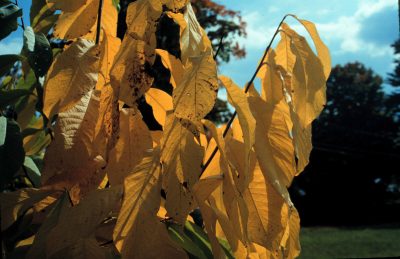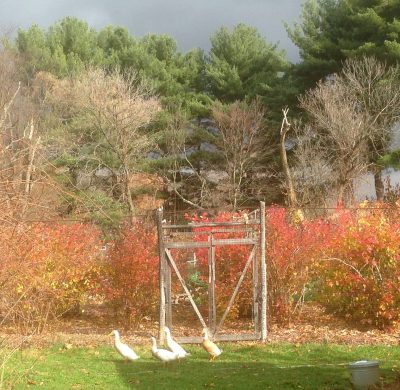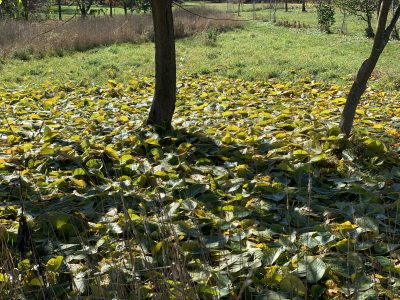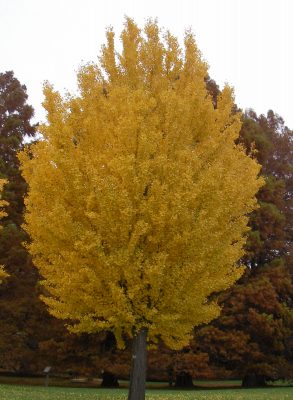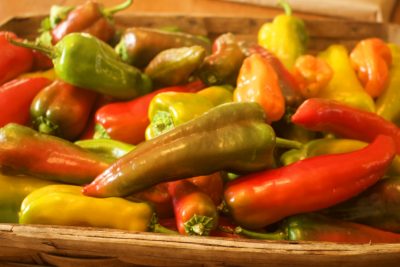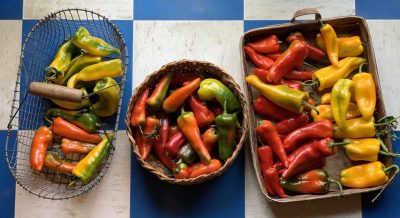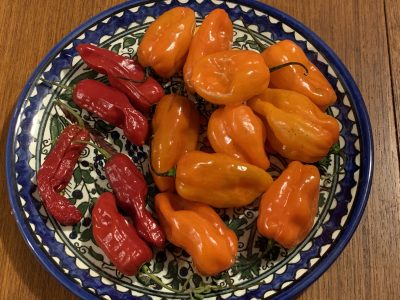ALMOST LIKE SUMMER
Fresh Veggies
When I was a child, it seemed that winter vegetables were mostly peas and diced carrots, conveniently poured frozen out of plastic bags into pots of boiling water. Yuk! Winter notwithstanding, my backyard garden still offers plenty of fresh winter vegetables. Let’s have a look. Kale, of course, looks unfazed by snow and plummeting temperatures. Not only does it look unfazed; it also tastes very delicious.
More surprising is the endive that I planted back in August, then covered beneath a “tunnel” of clear plastic and slightly insulating row cover held aloft by metal hoops in late October. Temperatures about a week ago went as low as -8° Fahrenheit! Thanks to the additional insulation from almost a foot of snow, now melted, the endive is still lush and tasty.
The rest of winter’s fresh garden vegetables are not in the garden. Most are in plywood boxes in cold storage, first in my mudroom, then moved out to my cooler. 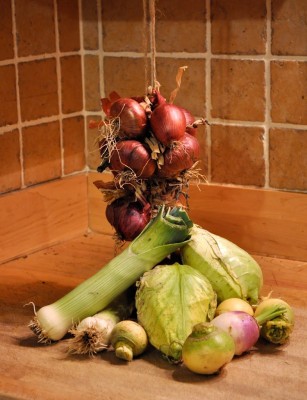 (The cooler is an insulated room cooled with an air conditioner that has been tricked, with a device called CoolBot, into bringing the temperature down just below 40° F.) One box houses Hakurei turnips, Watermelon radishes, and Daikon radishes picked around the middle of December.
(The cooler is an insulated room cooled with an air conditioner that has been tricked, with a device called CoolBot, into bringing the temperature down just below 40° F.) One box houses Hakurei turnips, Watermelon radishes, and Daikon radishes picked around the middle of December.
The same day I pulled the turnips and radishes, I also dug up leeks, now nestled into another box. With snow cover, both leeks and turnips probably would survive winter out in the garden, but reaching into a box is easier than chopping through ice and snow out in the garden to get at these vegetables.
Yet another box has a few heads of cabbage, also harvested that day in December. Lopping off the outer leaves, which anyway were looking ragged and slug-eaten, cuts water loss from the tight heads and keeps them fresh. One more box is packed full of napa type Chinese cabbages, good for “Asian slaw” or stir fry.
Most years I would have braids of onions also. Not this year. Crop failure. All the onions, both direct-seeded and grown from my transplants, didn’t grow large enough to bother storing. The problem was a clog, too long undetected, in the water line to the seasonal irrigation pump at, evidently, a critical time in onion bulb development.
(I also have a 400 square foot greenhouse packed full of fresh, growing lettuce, mustard greens, arugula, celery, claytonia, kale, chard, and mâche, with a little fresh dill, cilantro, and parsley. But that’s a whole other story.)
Summer Berries
I may be addicted to blueberries. I now eat them pretty much every morning year ‘round. That’s fresh blueberries beginning at the end of June, and frozen ones from mid-September on. I pace myself. The frozen blueberry season opens with about 70 bags (each bag about 5 cups) in the freezer, enough to keep us “berry happy” on into June.
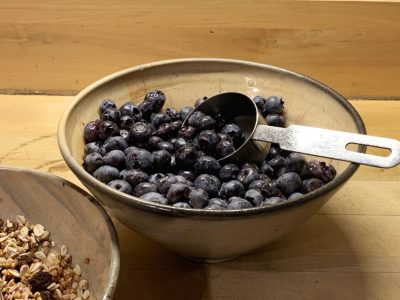
I highly recommend planting blueberries. They are easy to grow organically, the plants are beautiful, and the berries are very healthful and taste great. They’re also easy to freeze: Just spread them on a tray until frozen, then pack them into bags. Their two main requirements are suitable soil, easily made so, and protection from birds, with netting. Each bush will net you 8 pounds, or more, of berries.
Thawed in the refrigerator, the berries taste as good as fresh ones. Or maybe I believe that only because in late December it’s been so long since I’ve had a fresh blueberry.
Olfactory Romance
Man cannot, of course, live by bread alone. I could use some fragrance, some olfactory hint of spring — or summer, or fall. Years ago, I grew “many-flowered jasmine” (Jasminium polyantha). A misnomer for my plant. Its fragrance was heavenly but it only coughed up a few blossoms each winter, despite my subjecting it to a period of temperatures below 60 degrees F. and some drought to give it a rest before it (was supposed to) burst into flowering abundance.
Gardenia was another one of my plants for winter fragrance. It did bloom in winter, late winter, and its fragrance was heavenly. But it proved to be a magnet for scale insects, one of the most difficult house plant pests to control organically. Both plants have long ago been composted.
I’m now eagerly awaiting blossoms on my Meyer lemon plant. The plant is easy to bring into bloom, and there’s the added bonus of delicious lemons. Being a hybrid of lemon and sweet orange, Meyer lemon has a slightly different flavor from that of lemons.
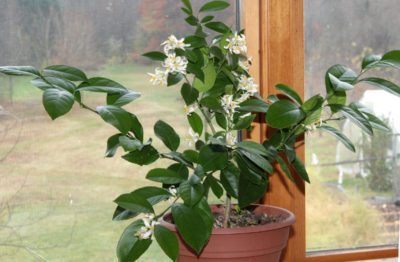
The other plant to — reliably, I hope — blossom now, in early winter is sweet osmanthus (Osmanthus fragrans), specifically the variety Goshiki. Why Goshiki? Because it has variegated leaves, green and white with splashes of pink, spiny like those of holly. 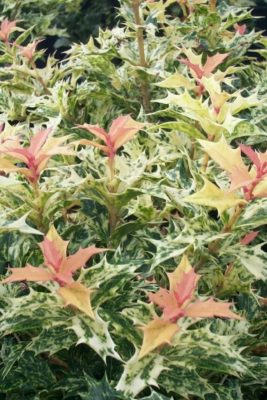 It’s cold-hardy to Zone 6. My plan is to grow it in a pot to bring indoors to a cool sunny window in late fall to spend the winter.
It’s cold-hardy to Zone 6. My plan is to grow it in a pot to bring indoors to a cool sunny window in late fall to spend the winter.
This is all a pipe dream so far because all I have is a spindly stem I cut to root from a plant beckoning me from a sidewalk near Philadelphia. The cutting doesn’t look hopeful. The quest begins.

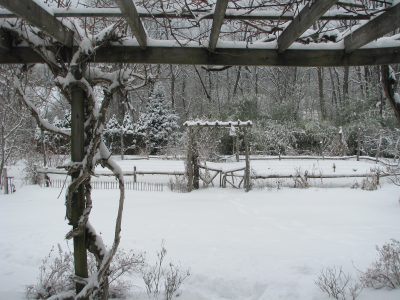
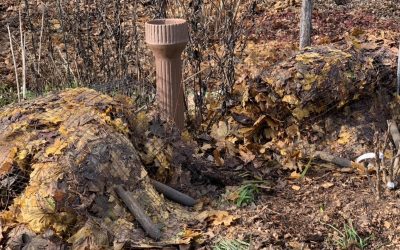 Both kinds of plants are probably cold-hardy to about zero degrees Fahrenheit, but here winter temperatures, except last winter, typically drop to about minus 20 decrees Fahrenheit. That snowy blanket provides extra protection that the plants might need — especially after last Saturday’s unseasonal low of minus 8 degrees.
Both kinds of plants are probably cold-hardy to about zero degrees Fahrenheit, but here winter temperatures, except last winter, typically drop to about minus 20 decrees Fahrenheit. That snowy blanket provides extra protection that the plants might need — especially after last Saturday’s unseasonal low of minus 8 degrees.

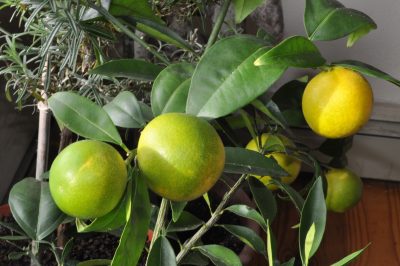
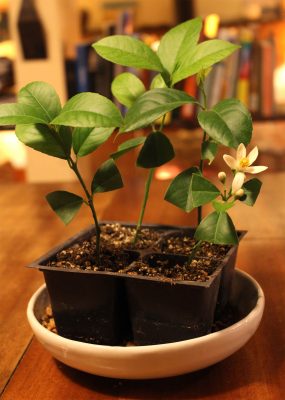
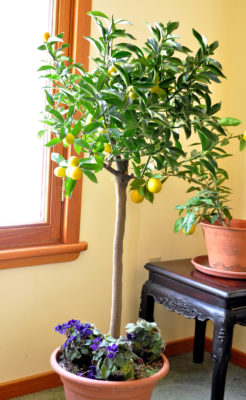
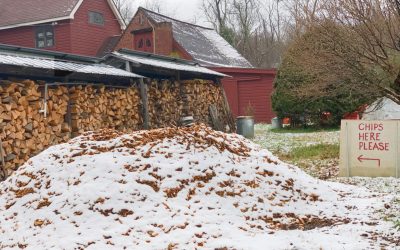 I figured I could spread it on the ground beneath some of my trees and shrubs, especially the youngest ones. There, next summer, the mulch would keep weeds at bay, slow evaporation of water from the ground, and feed soil life, in so doing enriching the soil with nutrients and organic matter.
I figured I could spread it on the ground beneath some of my trees and shrubs, especially the youngest ones. There, next summer, the mulch would keep weeds at bay, slow evaporation of water from the ground, and feed soil life, in so doing enriching the soil with nutrients and organic matter.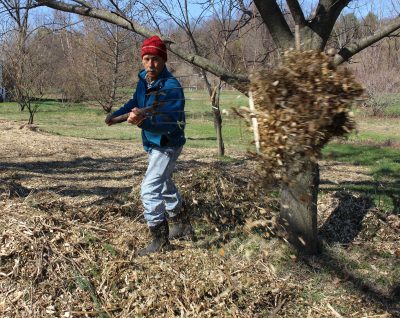 Chips there are mostly to suppress weeds which thrived with last season’s unusually abundant rainfall and to soften, by spreading out, the impact of footfall on the paths. I generally “chip the paths” every couple of years at a minimum if for nothing more so that the height of the paths keeps up with the rising height of the vegetable beds which get — and already got, at the end of this season — a one-inch deep blanket of compost annually. (Besides the usual benefits of mulches, the compost provides enough nutrients for the intensively planted vegetables for the whole season. No fertilizer per se is needed.)
Chips there are mostly to suppress weeds which thrived with last season’s unusually abundant rainfall and to soften, by spreading out, the impact of footfall on the paths. I generally “chip the paths” every couple of years at a minimum if for nothing more so that the height of the paths keeps up with the rising height of the vegetable beds which get — and already got, at the end of this season — a one-inch deep blanket of compost annually. (Besides the usual benefits of mulches, the compost provides enough nutrients for the intensively planted vegetables for the whole season. No fertilizer per se is needed.) Like the stems of any other plant, a strawberry stem each year grows longer from its tip and also grows side shoots. So a strawberry stem rises ever so slowly higher up out of the soil each year.
Like the stems of any other plant, a strawberry stem each year grows longer from its tip and also grows side shoots. So a strawberry stem rises ever so slowly higher up out of the soil each year.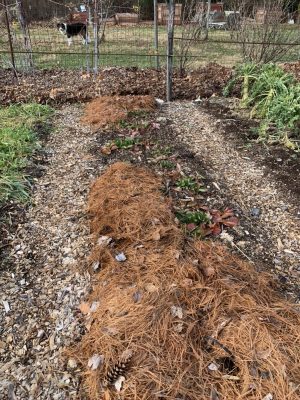 Mulching too early might cause the stems to rot. I typically wait until the ground has frozen about an inch deep which usually occurs towards the end of December here, and then cover the plants with about an inch depth of wood shavings.
Mulching too early might cause the stems to rot. I typically wait until the ground has frozen about an inch deep which usually occurs towards the end of December here, and then cover the plants with about an inch depth of wood shavings.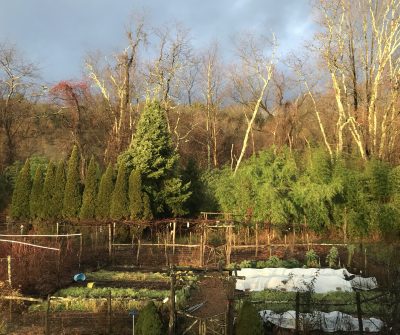
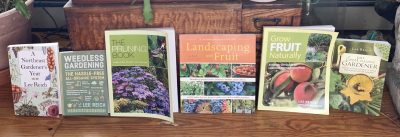
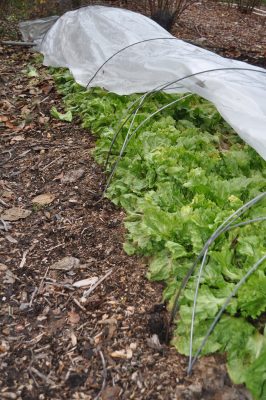
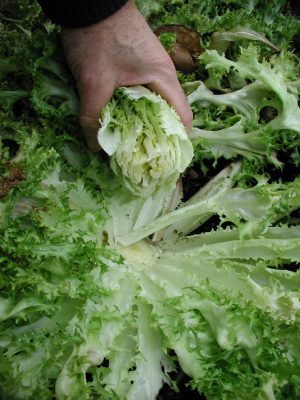 Only the slightest hint of bitterness remains, enough to make the taste more lively — delicious in salads, soups, and sandwiches.
Only the slightest hint of bitterness remains, enough to make the taste more lively — delicious in salads, soups, and sandwiches.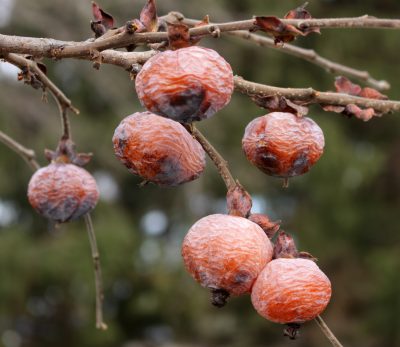
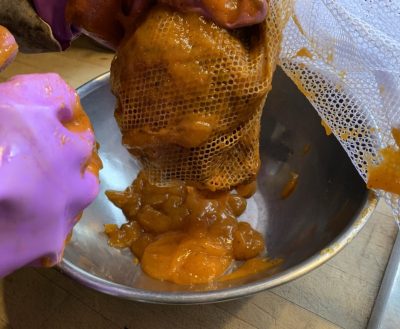 the pulp without seeds. No sweetener needed. Just jar it up and refrigerate (keeps about 2 weeks) or freeze. Delicious.
the pulp without seeds. No sweetener needed. Just jar it up and refrigerate (keeps about 2 weeks) or freeze. Delicious.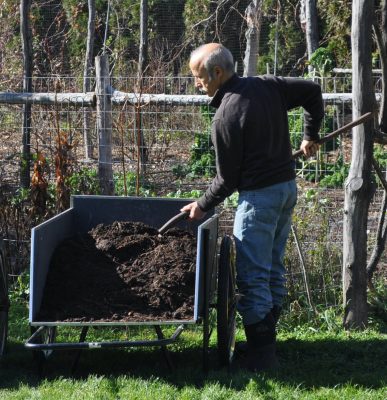
 For a hand shears, quality counts. Blades of the best hand shears, as in their name, shear past each other like those of scissors. They’re called “bypass pruners.” My favorite is the ARS hand shears. Shears with anvil blades — “anvil pruners” — sport a sharp blade that comes down on a narrow, flat surface; the flat surface limits how close you can make a cut and the shear works poorly if any nick or waviness develops on the sharp blade.
For a hand shears, quality counts. Blades of the best hand shears, as in their name, shear past each other like those of scissors. They’re called “bypass pruners.” My favorite is the ARS hand shears. Shears with anvil blades — “anvil pruners” — sport a sharp blade that comes down on a narrow, flat surface; the flat surface limits how close you can make a cut and the shear works poorly if any nick or waviness develops on the sharp blade. Soil in the cells sucks up moisture from below through capillary action to remain consistently moist, and the reservoir requires replenishment infrequently.
Soil in the cells sucks up moisture from below through capillary action to remain consistently moist, and the reservoir requires replenishment infrequently.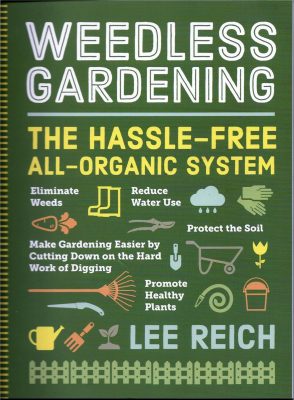 tells how to prepare and manage the soil, when to sow and transplant vegetables, what to use for mulch, how to make compost, the ins and outs of drip irrigation, and more.
tells how to prepare and manage the soil, when to sow and transplant vegetables, what to use for mulch, how to make compost, the ins and outs of drip irrigation, and more. 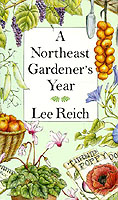 takes you on a timely jog through the year with all things gardening: soil, flowers, houseplants, naming plants, etc., depending on what needs doing gardenwise indoors and out. I’ve written more books (all are listed on this site), but these two are more essential.
takes you on a timely jog through the year with all things gardening: soil, flowers, houseplants, naming plants, etc., depending on what needs doing gardenwise indoors and out. I’ve written more books (all are listed on this site), but these two are more essential.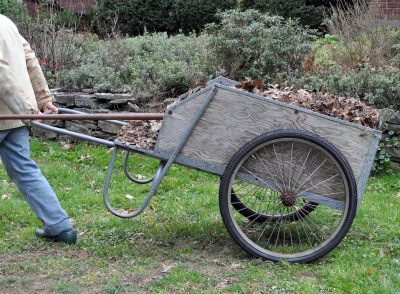
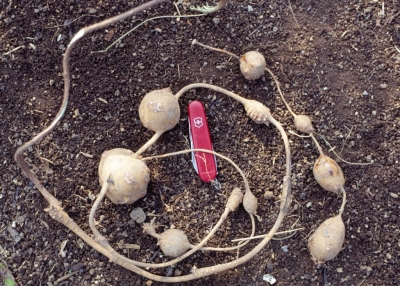
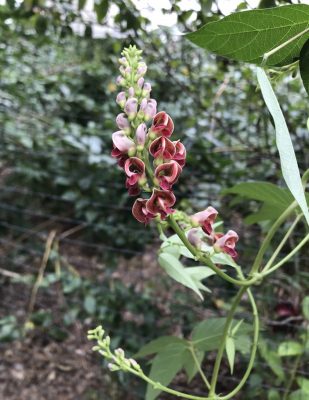
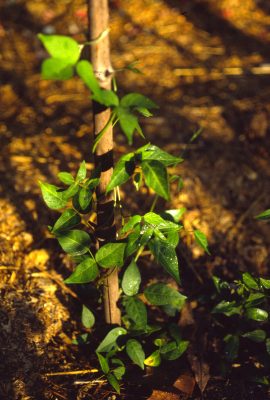
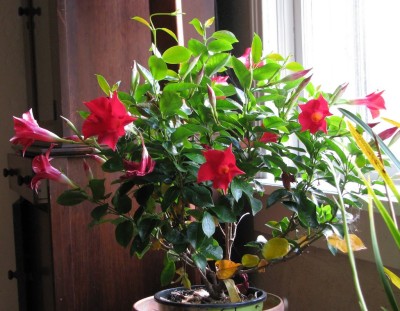 vining habit was also a big part of the draw, making the plant a stand-in for morning glory, but with prettier leaves and brighter flowers. Mandevilla is a perennial, tropical vine, so must winter indoors rather than be seeded outdoors each spring like morning glory. My vine’s leaves yellowed so much in winter that I tired of looking at it; one winter day I walked it over to the compost pile.
vining habit was also a big part of the draw, making the plant a stand-in for morning glory, but with prettier leaves and brighter flowers. Mandevilla is a perennial, tropical vine, so must winter indoors rather than be seeded outdoors each spring like morning glory. My vine’s leaves yellowed so much in winter that I tired of looking at it; one winter day I walked it over to the compost pile.
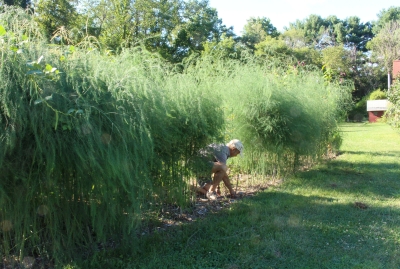 weeds germinating and growing, and hard to reach among the 6-foot-high forest of feathery stalks. The bed is now weeded and soon to be fertilized (2#/100 square feet of soybean meal) and mulched (wood chips 2 inches deep).
weeds germinating and growing, and hard to reach among the 6-foot-high forest of feathery stalks. The bed is now weeded and soon to be fertilized (2#/100 square feet of soybean meal) and mulched (wood chips 2 inches deep).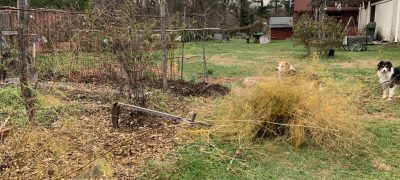

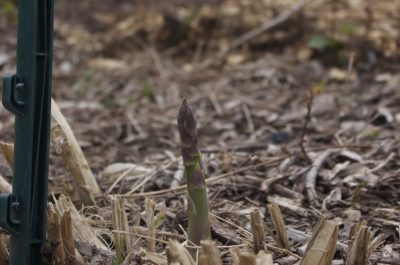

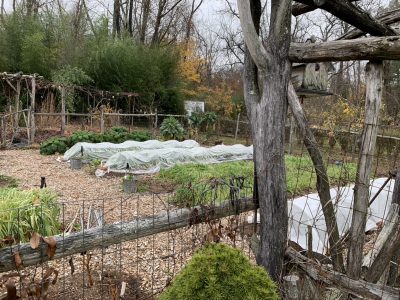

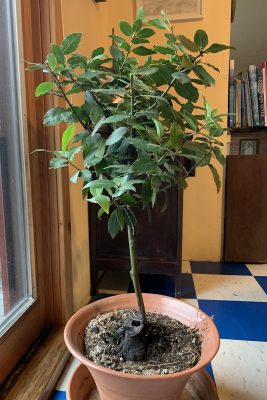
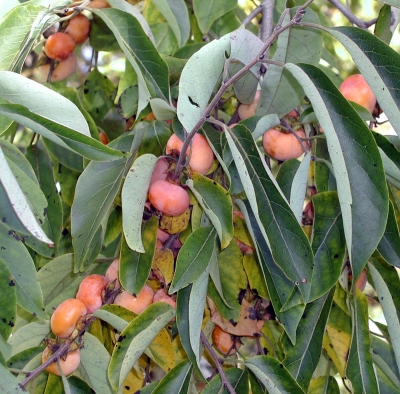
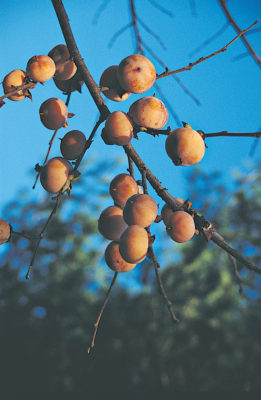
 But I’m writing about color, and Persian ironwood has it, the leaves emerging purplish in spring, turning a lustrous green in summer, then morphing into variable shades of yellow, orange and red in autumn.
But I’m writing about color, and Persian ironwood has it, the leaves emerging purplish in spring, turning a lustrous green in summer, then morphing into variable shades of yellow, orange and red in autumn.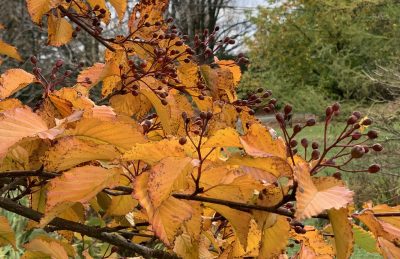
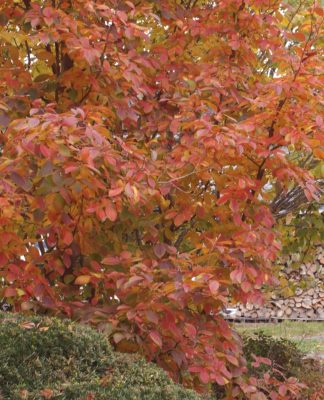

 Pawpaw (Asimina triloba) is another fruit plant here, this one with many tropical aspirations. Tropical aspirations? It’s the northernmost member of the mostly tropical Custard Apple family (Annonaceae); its fruit has taste and texture reminiscent of banana; the fruits hang in clusters like bananas; and its long, drooping leaves would be visually at home in tropical climes. Come fall, the plants shed those tropical aspirations as the leaves turn clear yellow, especially nice when backlit by sunlight.
Pawpaw (Asimina triloba) is another fruit plant here, this one with many tropical aspirations. Tropical aspirations? It’s the northernmost member of the mostly tropical Custard Apple family (Annonaceae); its fruit has taste and texture reminiscent of banana; the fruits hang in clusters like bananas; and its long, drooping leaves would be visually at home in tropical climes. Come fall, the plants shed those tropical aspirations as the leaves turn clear yellow, especially nice when backlit by sunlight.